by Jon LeSage, editor and publisher, Green Auto Market
Here’s my take on the 10 most significant and interesting occurrences during the past week…….
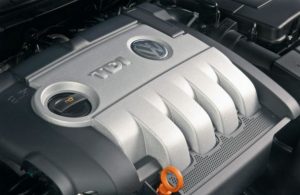 More on the Volkswagen diesel emissions scandal……… Frank Tuch, previously head of VW’s group quality control, has left the company with details yet unknown beyond Tuch leaving “to take on new responsibilities elsewhere.” Tuch was appointed in 2010 by former CEO Martin Winterkorn, who did take partial blame for the scandal and left the company in September. Current CEO Matthias Mueller has been overhauling senior management positions in the wake of the emissions test-rigging scandal……… VW will be offering compensation packages to about 600,000 Americans who own one of these TDI diesel cars violating emissions limits. The U.S. attorney is finalizing the package and it’s not yet clear whether this will be a buy-back, cash, car replacement, repair, or some combination……… The European Union has become more flexible about considering new emissions rules soon after a protest measure was rejected by lawmakers. The new rules may be flawed, but lawmakers believe they will at least provide some greater regulation of emissions testing, according to Giovanni La Via, chair of the EU’s Environment Committee. Members of the European Parliament recently rejected a proposal to require on-road emissions testing for new vehicles.
More on the Volkswagen diesel emissions scandal……… Frank Tuch, previously head of VW’s group quality control, has left the company with details yet unknown beyond Tuch leaving “to take on new responsibilities elsewhere.” Tuch was appointed in 2010 by former CEO Martin Winterkorn, who did take partial blame for the scandal and left the company in September. Current CEO Matthias Mueller has been overhauling senior management positions in the wake of the emissions test-rigging scandal……… VW will be offering compensation packages to about 600,000 Americans who own one of these TDI diesel cars violating emissions limits. The U.S. attorney is finalizing the package and it’s not yet clear whether this will be a buy-back, cash, car replacement, repair, or some combination……… The European Union has become more flexible about considering new emissions rules soon after a protest measure was rejected by lawmakers. The new rules may be flawed, but lawmakers believe they will at least provide some greater regulation of emissions testing, according to Giovanni La Via, chair of the EU’s Environment Committee. Members of the European Parliament recently rejected a proposal to require on-road emissions testing for new vehicles.- SDG&E installing 3,500 chargers: San Diego Gas & Electric has received regulatory approval to install up to 3,500 electric vehicle charging stations at 350 sites. The California Public Utilities Commission has approved its Electric Vehicle Grid-Integration pilot project, which may cost SDG&E $45 million to construct. The power utility thinks it’s a great opportunity to maximize use of renewable energy to charge EVs and reduce the need for new fossil-fuel power plants. That follows Southern California Edison winning CPUC approval for its $22 million “Charge Ready” initiative. SCE says it’s a pilot project installing up to 1,500 charging stations in its service territory.
- Incentives for fleet EV acquisition: Nissan’s Marc Deutsch and GNA’s Joe Annotti will be covering critical issues fleets face in deploying plug-in electric vehicles. ACT Expo is hosting a complimentary, one-hour webinar, which will highlight key incentives that help to substantially buy down the cost of electric vehicles, charging, and other costs of traditional vehicle ownership to maximize fleet deployment. Deutsch will be talking about significant fleet incentives; and Annotti will go over GNA’s Funding 360° Program that helps companies, municipalities, and organization track, evaluate, and apply for funding programs throughout North America. Click here to register for the free webinar, “Making Cents of Electric Vehicles: Key Incentives for Fleet Deployment,” which takes place tomorrow, Feb. 10, 2016, at 10:00-11:00 a.m. PT.
- Leaf turns around in used values: The Nissan Leaf has seen a reverse in its used vehicle valuation dilemma. During the fourth quarter of 2015, Kelley Blue Book Auction Values on model-years 2012 through 2015 Leafs were up three percent from where they were in the third quarter. That was while gasoline prices continued to plunge – 14.2%, or 32 cents, during that time period. “This rebound could be attributed to consumers now finding the current value of electric vehicles more attractive at their current price point following months of steady declines,” KBB analyst Sean Foyil said in the latest edition of Blue Book Market Report. That was during a time period when most used vehicles saw prices dropping as off-lease vehicle returns oversupplied the market.
- Goodbye Cadillac ELR: Cadillac won’t be building the next-generation version of its plug-in hybrid luxury ELR model. It has been released as a 2016 model year car, but General Motors hasn’t announced when it will be pulled off the market. It gained a lot of attention when launched as a 2014 model year electric vehicle with a $76,000 price tag. It was the only competitor out there, at the time, to the Tesla Model S. GM didn’t produce very many of them, and sales numbers were slight. It runs off a powertrain similar to the Chevrolet Volt, and it did get a lot of raves when it was first launched.
- More Google driverless car testing: Google is adding to its testing grounds for self-driving cars with a new route added in Kirkland, Wash., later this month. That follows six years of road testing in Mountain View, Calif., near its corporate campus; and Austin, Texas, which allowed for autonomous vehicle testing last summer. So far, 1.4 million miles of testing has been done. The company said that going up the Pacific Northwest provides “different driving environments, traffic patterns, and road conditions.”
- Oil tax in budget: President Obama today will be proposing a tax of $10 per barrel on oil in the 2017 budget to Congress. The goal is to create “a clear incentive for private-sector innovation to reduce our reliance on oil, and at the same time invests in clean energy technologies that will power our future,” the White House said. Tax proceed would go to the nation’s transportation infrastructure and to reduce emissions of carbon dioxide from transportation. That proposal could be killed off in the Republican majority House. “President Obama’s proposed $10 per barrel tax on oil is dead on arrival in the House,” House majority whip Steve Scalise (R-LA) said.
- RMI on fuel price increases: As we’ve seen clearly in the past year, rapidly declining gasoline and diesel fuel prices can hurt sales of, and support for, plug-in electric, hybrid, and alternative fuel vehicles. Amory Lovins, chief scientist at Rocky Mountain Institute, thinks that these market conditions are set to turn around. Read on for his perspectives.
- Army testing autonomous vehicles: The U.S. Army is going back strong to its R&D efforts that started in the 1980s. The Army recently has been testing convoys of autonomous vehicles that follow a truck driven by a human. These tests have included up to 10 vehicles equipped with cameras, radar and onboard computers to identify potential road hazards. The equipment is costing the Army about $175,000 per vehicle; the Army thinks this will go down to one tenth that cost once it becomes mass produced.
- Uber taking heat for changing logo: Along with increasing “surge pricing” that is driving up the cost of Uber trips, the latest controversy on the ridesharing giant is that its emblem has been changed dramatically. The title of a Washington Post piece tells the story, “Why everyone hates Uber’s new logo.” Riders has grown accustomed to its grey “U” logo. At the beginning of this month, the logo on the mobile app transformed into a circle with a thin line through the left side; and it rests within an aqua green background with etchy, thin lines in some sort of diagram. It could be the logo for any company, and the iconic U has gone away.




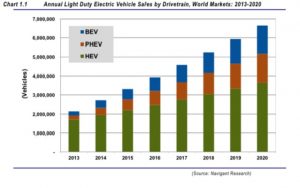 Automakers have understood for years that California, and the overall U.S. market, can’t be depended upon for meeting large-scale sales targets in plug-in electric vehicles. The decline in U.S. sales numbers during 2015 didn’t help, but the overall sales volume had still been small enough for automakers to question their future plans. That’s where global markets have become more important as OEMs look to sell enough volume to justify the resources invested in electric cars through talented employees, R&D, safety and performance testing, marketing spend, and setting up assembly plants to reach economies of scale. That has been the case for Tesla Motors along with its major OEM competitors, which makes China and other overseas markets even more important.
Automakers have understood for years that California, and the overall U.S. market, can’t be depended upon for meeting large-scale sales targets in plug-in electric vehicles. The decline in U.S. sales numbers during 2015 didn’t help, but the overall sales volume had still been small enough for automakers to question their future plans. That’s where global markets have become more important as OEMs look to sell enough volume to justify the resources invested in electric cars through talented employees, R&D, safety and performance testing, marketing spend, and setting up assembly plants to reach economies of scale. That has been the case for Tesla Motors along with its major OEM competitors, which makes China and other overseas markets even more important.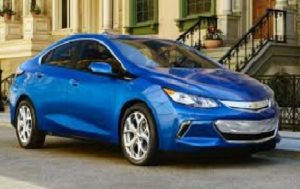 January EV sales: Plug-in electric vehicle sales saw the typical downturn pattern for the month of January. Winter Storm Jonas, which closed parts of the Eastern Seaboard for several days, has meant that less car shoppers have visited dealerships. With 2015 down slightly from 2014 in overall EV sales, January didn’t start this new year on a strong note. The
January EV sales: Plug-in electric vehicle sales saw the typical downturn pattern for the month of January. Winter Storm Jonas, which closed parts of the Eastern Seaboard for several days, has meant that less car shoppers have visited dealerships. With 2015 down slightly from 2014 in overall EV sales, January didn’t start this new year on a strong note. The 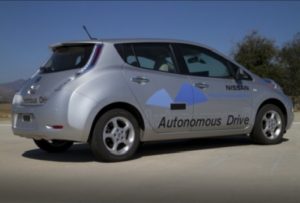 General Motors Co. is betting big on its future in the fast-changing automotive space. Along with its investments in Lyft, Sidecar, and its Maven startup brand, GM has announced management changes to support its next-generation vehicle technologies. Doug Parks, GM’s vice president for global product programs, is now vice president for autonomous technology and vehicle execution. Parks will oversee projects to develop new electrical and battery systems and software for autonomous and electric vehicles, the company said. There are other executives taking positions in GM’s new Autonomous and Technology Vehicle Development Team with similar backgrounds in electric vehicles and technology innovations.
General Motors Co. is betting big on its future in the fast-changing automotive space. Along with its investments in Lyft, Sidecar, and its Maven startup brand, GM has announced management changes to support its next-generation vehicle technologies. Doug Parks, GM’s vice president for global product programs, is now vice president for autonomous technology and vehicle execution. Parks will oversee projects to develop new electrical and battery systems and software for autonomous and electric vehicles, the company said. There are other executives taking positions in GM’s new Autonomous and Technology Vehicle Development Team with similar backgrounds in electric vehicles and technology innovations.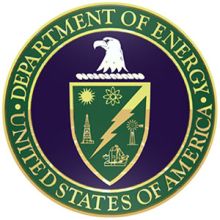 DOE offering $58M in funding: U.S. Department of Energy Secretary Ernest Moniz appeared at the Washington Auto Show to announce an additional
DOE offering $58M in funding: U.S. Department of Energy Secretary Ernest Moniz appeared at the Washington Auto Show to announce an additional 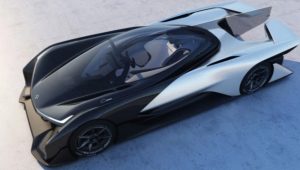 Faraday Future: This Chinese startup has been getting a lot of attention in the past few months, with that culminating at the Consumer Electronics Show in Las Vegas. The company is backed by Chinese billionaire Jia Yueting and plans to build a 900-acre, $1 billion factory in Nevada in the near future. Faraday Future unveiled the Batmobile-like FFZERO1 in Las Vegas, which has four electric motors (one at each wheel) combined that deliver more than 1,000 horsepower, enough to send the car from 0 to 60 mph in under three seconds and to a top speed of 200 mph. What’s been most interesting about Faraday is the platform architecture that it’s built on. It’s very flexible – Faraday can add or remove batteries, shorten or extend the chassis depending on the body that will be attached, or other applications. It’s a much faster process than what traditional OEMs go through – new vehicles can be production ready in 18 to 24 months, the company said. There’s talk about Faraday Future vehicles being deployed in Uber-like ridesharing services and as autonomous vehicles. Wherever this new startup is heading, it gained a wave of buzz and news coverage at CES and the Detroit Auto Show.
Faraday Future: This Chinese startup has been getting a lot of attention in the past few months, with that culminating at the Consumer Electronics Show in Las Vegas. The company is backed by Chinese billionaire Jia Yueting and plans to build a 900-acre, $1 billion factory in Nevada in the near future. Faraday Future unveiled the Batmobile-like FFZERO1 in Las Vegas, which has four electric motors (one at each wheel) combined that deliver more than 1,000 horsepower, enough to send the car from 0 to 60 mph in under three seconds and to a top speed of 200 mph. What’s been most interesting about Faraday is the platform architecture that it’s built on. It’s very flexible – Faraday can add or remove batteries, shorten or extend the chassis depending on the body that will be attached, or other applications. It’s a much faster process than what traditional OEMs go through – new vehicles can be production ready in 18 to 24 months, the company said. There’s talk about Faraday Future vehicles being deployed in Uber-like ridesharing services and as autonomous vehicles. Wherever this new startup is heading, it gained a wave of buzz and news coverage at CES and the Detroit Auto Show.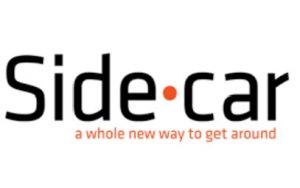 General Motors Co. confirmed its commitment to urban mobility yesterday by announcing it has
General Motors Co. confirmed its commitment to urban mobility yesterday by announcing it has 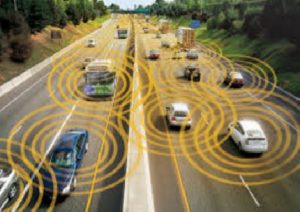 Consortium and funding for connected and autonomous vehicles: The federal government announced
Consortium and funding for connected and autonomous vehicles: The federal government announced  ACT Expo: The
ACT Expo: The 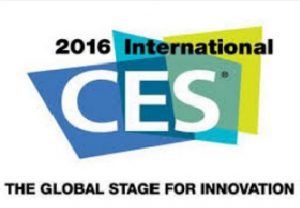 Self-driving cars and electrified vehicles were key themes at the 2016 Consumer Electronics Show (CES) last week in Las Vegas. CES has become the leading showcase arena in the U.S. for the coolest, cutting-edge devices for cars and other consumer products. It seems to be evolving into the leading event of the year for the auto industry, slightly surpassing the North American International Auto Show right before it starts up this coming week in Detroit.
Self-driving cars and electrified vehicles were key themes at the 2016 Consumer Electronics Show (CES) last week in Las Vegas. CES has become the leading showcase arena in the U.S. for the coolest, cutting-edge devices for cars and other consumer products. It seems to be evolving into the leading event of the year for the auto industry, slightly surpassing the North American International Auto Show right before it starts up this coming week in Detroit.